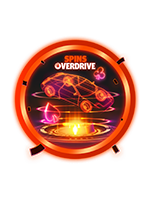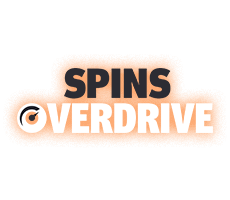How to play
Poker Stakes: Learn About Poker Buy-ins and Table Stakes
Poker is full of phrases and terminology that can be confusing to an outsider or someone new to this crazy game. Listening into a conversation between two poker players may result in you hearing about buy-ins and table stakes, but what are they and what do they mean? Guess what? You are about to find out all about both of them.
What is a Buy-in in Poker?
The term buy-in has two meanings in poker and online poker depending if you are a cash game or tournament player. For cash game players, the buy-in is the amount of money that you sit down with at the table. Most cash games have a minimum and maximum buy-in based on the table's stakes. Traditionally, one cash game buy-in is 100 times the game's big blind. Therefore, $100 would be a buy-in for a $0.50/$1 No-Limit Hold'em cash game.
Tournament poker players, that is sit & go, SPINS, satellite, and multi-table tournaments, use the term buy-in to describe the total cost of entering a game. A tournament with an $11 buy-in would cost $11 to enter. It is important to include the tournament fees into your calculation. Our tournaments always show the full buy-in in the main lobby, but that is not always the case with other online poker sites. Some show an $11 buy-in tournament as $10+$1.
Discussions about bankrolls will often result in buy-ins being mentioned. For example, someone may say they have 200 buy-ins for $11 tournaments, which means they have a $2,200 bankroll at their disposal.
In short, a buy-in is the total cost of entering a tournament or sitting down in a cash game.
How Much Will a Buy-in Cost?
How much will a buy-in cost? How long is a piece of string, is the answer! Tournament buy-ins range from being completely free in freerolls up to $100,000 or more. Typically, at PartyPoker, our tournament buy-ins start at $0.01 and increase to $1,050, although we have hosted $5,300, $10,300, and even $25,000 buy-in tournaments during major festivals.
Cash game buy-ins are a little more complicated because they feature a minimum and maximum amount you can bring to the table. The cash game table's blinds determine these amounts.
Usually, there is a 20 big blind minimum and a 100 big blind maximum for cash game buy-ins. At a $0.25/$0.50 No-Limit Hold'em cash game, you must sit with at least $10 but no more than $50; you could buy in for $24.96 if you wished!
Some cash games have a 200 or 250 big blind maximum buy-in. These deep-stacked cash games are more common in a live poker setting, but are sometimes available online.
It is possible to add more chips to your stack but only once the current hand concludes, and only if doing so does not take you over the table's maximum buy-in. Conversely, you are not permitted to remove chips from your stack once they are in play. This is a practise called "rat holing" and is extremely poor etiquette. While rat holing is impossible at PartyPoker, players can be tempted to do it in a live poker setting; do not!
What Are Table Stakes?
Table stakes are what some players call the blinds in cash games. For example, a No-Limit Hold'em cash game with $0.25/$0.50 blinds would have the same stakes.
Often, players talk about they stakes they play for using abbreviations and a number. For example, NL25, PLO400, and so on. In those examples, NL2 equates to No-Limit Hold'em with a $25 buy-in, so $0.10/$0.25 stakes, while PLO400 refers to Pot-Limit Omaha with a $400 buy-in, so $2/$4 stakes.
Cash game stakes tend to be categorised into Micro, Low, Medium, High, and High Roller. At PartyPoker, $0.01/$0.02 to $0.05/$0.10 are micro stakes, with $0.10/$0.25 and $0.25/$0.50 considered low stakes.
Medium stakes have blinds of $0.50/$1 and $1/$2, while high stakes are $2/$4 to $5/$10 games. High Roller games are any with blinds of $10/$20 or above.
A similar system applies to tournament players except the tournament's buy-in determines its stakes. Micro stakes tournaments cost between $0.01 and $4.99 to enter, Low stakes are those with a $5 to $21.99 buy-in, and medium stakes are $20 to $55 buy-in tournaments. You play high stakes if you play $55 to $530 buy-in tournaments, and anything above $530 is considered a high roller at PartyPoker.
****The Micro Stakes section at the bottom seems like it has just been bolted on, so a little out of place. Also, the advice is appalling! I've revamped it to make it easier to read and digest for any micro stakes players that come across the page****
Tips for Micro Stakes Games
Micro stakes cash games and tournaments are a great place for budding poker players to start their careers. Although the tables stakes are small, it is possible to win significant money – in comparison to the blinds – from them. In addition, playing for micro stakes allows you to hone your skills and develop strategies in an environment where players have real money on the line. Play money games cost nothing, but they tend not to play extremely loose because nobody can win or lose money, so winning and losing does not matter!
The average skill level of micro stakes players has increased in recent times due to the sheer amount of information available to players. That said, the micro stakes are awash with lesser skilled and novice players, making them the perfect hunting ground for someone taking poker seriously.
Although any playing style can win at the micro stakes, most opponents you come across at this level will play fast and loose. In poker, you often win more money by playing an opposite style to your opponents, so a tight-aggressive strategy is advised. This means playing fewer but stronger starting hands, and playing them aggressively with raises and re-raises before the flop.
It is a similar story from the flop onwards: value bet your big hands. Micro stakes players love to call after catching any piece of the flop or if they have a draw. As the stakes are low, they often forget they are playing for real money, and will call a $3 bet as liberally as a $0.75 bet. Do not get tricky and succumb to "fancy play syndrome," just bet when you have it, and look for spots where you can safely bluff.
On the subject of bluffing, do not come up with an elaborate bluff because it is not worth the effort. A bluff must tell a convincing story to be successful, and many micro players are only concerned with their two hole cards, rendering your bluff pointless.
Lastly, pay attention to your opponents and take notes on their play. You will likely find that most of your opponents play an ABC style of poker, that is one where they bet when they have the goods and check or fold when they do not. A player, regardless of how bad they are at poker, who calls your raise preflop, check-calls the flop and turn before betting or check-raising the river when a straight or flush is possible almost always has that hand.
Post-flop play
Small stake games are all about the flop. Assuming you picked a good hand to start with, the flop will decide whether you should go ahead or not. Once you’ve decided, you need to follow through. There’s no guesswork or worrying what everyone else is going to do. You’re playing the hand and that’s it.
If you lose the hand, don’t worry; just pick yourself up and try again. Chances are, you’ll win most of the time if you follow this strategy.
Betting tactics
When you’re playing for small amounts, you’ll want to get as much value as you can in a short space of time. Let’s give you an example of how to do this:
After raising before the flop with A-K, there’s $8 in your stack, two opponents left and $2.50 in the pot. The flop comes K-6-2.
You decide to go ahead. But what to bet? It should be big enough bet you can go all-in if you’re called, but not so scary that the other players will fold. So a pot-sized bet would be about right. That would leave you with $5.50 and a pot of $5. If you’re called, you can put the rest in on the turn.
If you want to make micro stakes work for you, you’ve got to act with this kind of certainty every time.
Choosing the right hands
Of course, this only works if you’ve read the flop correctly in the first place (this is where lots of people come unstuck).You need to know that an A-K with a K-Q-J flop against three other players spells trouble, and that 5-4 on a 6-7-10 flop is unlikely to take the prize.
So what hands should you go with? Obviously, top hands like sets, full houses, flushes and straights go without saying. There’s also a place for top-pair hands, middle-pair hands with outs and big drawing hands (for example, a flush draw with two overcards).
Playing multiple tables
Good at multi-tasking? That’s handy, because if you really want to make money in Micro-Limit poker, you need to learn how to play multiple tables. Sounds crazy, but because micro-limit games are relatively predictable, experienced players often have several tables running at the same time.
With four $0.05/$0.10 tables you can make $5 an hour if you know what you’re doing. It’s not going to pay off the mortgage, but it’s about the same as playing $10 Sit & Go tournaments and you’ll learn more.
Playing multiple tables isn’t easy at first. We say practice with two tables at first, then keep adding as you get more confident. There’s no right number to aim for – it really depends on the person – but however many tables you end up playing, the same strategy applies.
- Be patient
- Pick the right hands and situations
- Follow through with the hands that you do play
Three final rules
- Avoid draws (almost-there hands that are only good if you get the right card). In cash games, chasing draws can mean the difference between winning and breaking even – especially when the implied value (the amount you’ll pick up if you make the hand) is actually nothing to write home about.
- Don’t bluff. Bluffing only works when people have a lot to lose. In small stakes games, people will happily take you on every time. So unless you’re sure opponent really has no imagination at all, it’s not usually a winning tactic.
- Be a caller. Just because you’re not going to bluff, doesn’t mean other people won’t try it (they probably think it’s the only way to play poker). If someone’s been playing all kinds of hands, don’t be afraid to call them on the river.
Practice with the help of our poker coach, Whizz, and improve your game!
Create Account
